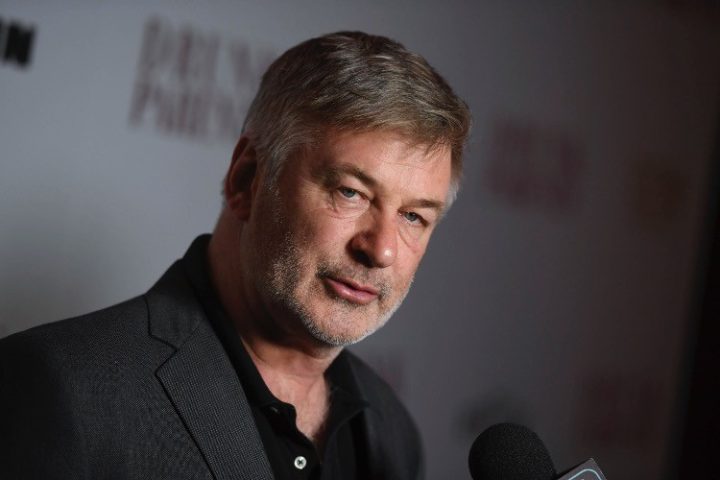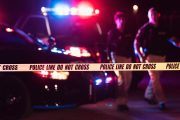
New Mexico prosecutors don’t merely allege that Alec Baldwin committed involuntary manslaughter when he shot and killed cinematographer Halyna Hutchins on October 21.
They also allege that the movie set was an accidental shooting waiting to happen. As a “primary producer,” Baldwin ignored basic safety standards, prosecutors allege, and the armorer who provided the weapon with which Hutchins was shot was inexperienced.
Worse still, after the prop master accidentally discharged a weapon similar to Baldwin’s, no disciplinary action was taken, and no remedial training was done.
The complaint also shows that Baldwin grievously erred when he spoke to police without an attorney, then continued blabbing to the media. He might well have provided the evidence they need to convict.
Prosecutors: 30 Minutes Training
Baldwin’s troubles began when Baldwin, 64, shot Hutchins, then 42, during a rehearsal on the set of Rust, a Western in which Baldwin plays an aging outlaw who emerges from hiding to save his 13-year-old grandson from hanging for murder.
The actor claimed he pulled back the hammer on the single-action Colt .45 at Hutchins’ direction. When he let it go, “the gun went off.”
An FBI analysis of the gun proved that couldn’t be true, but the prosecutors’ case goes well beyond the moment when Baldwin killed Hutchins.
The evidence shows that Baldwin “was provided only minimal training on firearms” even though armorer Hannah Gutierrez-Reed “requested more training for BALDWIN,” prosecutors allege:
In the deposition taken from REED, she stated BALDWIN had very limited training on the cross draw that was required for the scene … and limited training in firearms … and … how to check his own firearm as to whether it was unloaded or loaded.
Reed said Baldwin needed at least an hour of training, but trained for only 30 minutes, and was yakking on his cell phone during the training.
Though Baldwin told deputies at the scene that he “fired” the gun, he later said “it had just … gone off,” prosecutors continue:
BALDWIN made this assertion public as well, in multiple media interviews conducted after the shooting. Many media interviews and law enforcement interviews were conducted by BALDWIN, and he displayed very inconsistent accounts of what happened during the incident when firing the gun that killed HUTCHINS.
Indeed, photos and video show Baldwin “multiple times, with his finger inside of the trigger guard and on the trigger, while manipulating the hammer and while drawing, pointing, and holstering the revolver.”
The Negligence
But those facts merely go to the shooting itself. The set, prosecutors allege, was a disaster in the making.
Though Baldwin has been involved in at least 40 movies with firearms, he did not follow standard safety protocols, which required Reed “to show the actor the firearm, pull the bullets out in front of the actor, and demonstrate there are no live rounds (but dummies) in the firearm. BALDWIN knows this is standard safety protocol as he has mentioned it in media interviews and in law enforcement interviews. [REED] did not do this protocol in front of BALDWIN. BALDWIN did not object to this action.”
Baldwin “was in a position” to ensure proper safety training, and failure to do so is considered “reckless in the industry,” prosecutors allege.
And hiring Reed might have been reckless itself. The 24-year-old “possessed no certification or certifiable training, or union ‘card’“ to be an armorer, and “she admitted she was the armorer for only one (1) film prior to this production.”
Baldwin caused the “inexperienced and unqualified” Reed to be hired, and then failed to take precautions that would mitigate Reed’s inexperience.
Reed was also assistant prop master, which distracted her from her key job as armorer, a violation of industry standards that led to the shooting.
If that weren’t bad enough, the prop master, Sarah Zachary, nearly blew off her foot when she accidentally discharged a gun, prosecutors allege:
Sarah Zachary possessed little to no experience with firearms, firearm safety, armorer duties and responsibilities, etc. [Yet] Sarah Zachary was assigned to/allowed to load and unload ammunition in firearm(s), handle firearm(s), and act as an armorer when on-set with actors/doubles taking possession of the firearms. Evidence shows this was done multiple times and without REED being on the sat as well. Evidence shows that despite the production team’s awareness of the safety issues, BALDWIN did not address this reckless process/procedure that is contrary to industry standards and safety protocols and commonly understood firearms safety procedures.
Prior to the shooting incident, Sarah Zachary had a negligent discharge while handling a revolver intended to be used by an actor in the filming.… Zachary was holding and manipulating the weapon while walking and she discharged a blank cartridge into the ground next to her foot.
That type of reckless discharge requires “remedial training, demotion, removal from the set, [or] termination.” But Baldwin did nothing.
Prosecutors charged Baldwin with two counts of involuntary manslaughter. One for negligent use of a deadly weapon, and and alternative charge for “death in an unlawful manner or without due caution and circumspection.” Both are fourth-degree felonies that carry an 18-month prison sentence.
Did Baldwin Give Enough Evidence to Convict?
Again, Baldwin confessed to deputies at the scene that “he was one who … “fired” … the gun,” prosecutors allege. Later, he said the gun had “gone off.”
Another mistake was speaking with detectives. He confessed that he didn’t check the gun, as Farhad Manjoo explained in The New York Times:
“She said, ‘Do you want to check?’ — and I didn’t want to insult her, we never had a problem. I said, ‘I’m good.’”
Prosecutors allege that he “failed to demand at least two (2) safety checks between the armorer and himself…. Had BALDWIN performed the required safety checks with the armorer, REED, this tragedy would not have occurred.”
So Baldwin confirmed an allegation in the criminal complaint.
Continued Manjoo:
Also, in a second conversation with the police a week later, Baldwin said it was actually Dave Halls, the film’s first assistant director, who handed him the gun while announcing, “cold gun.” (Halls has since agreed to a plea deal with prosecutors.)
“It presents a huge problem if he ever wants to actually testify,” Joshua Ritter, a criminal defense lawyer and former prosecutor in Los Angeles, said of Baldwin’s decision to talk to the police as well as the news media. “If he takes the stand to try to explain his side of things to the jury,” he will need to explain any possible contradictions in these prior statements, Ritter said.
Manjoo riffed off a popular lecture by Regent Law professor James Duane, a former criminal defense attorney. His advice: Never talk to the police.
In a video posted to YouTube with 18 million views, Duane explains that even the innocent can provide police with incriminating statements that lead to arrest and conviction. And a suspect, he says, cannot talk himself out of an arrest if the cops think he committed the crime.
As well, he observes, exculpatory statements to police cannot be used at trial because they are considered hearsay.
Duane quotes late U.S. Supreme Court Associate Justice Robert H. Jackson, chief prosecutor at the Nuremberg Trials:
Any lawyer worth his salt will tell the suspect, in no uncertain terms, to make no statement to the police under any circumstances.



